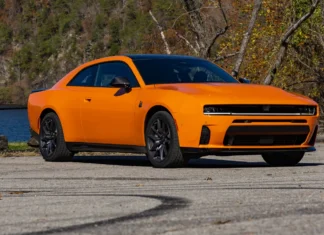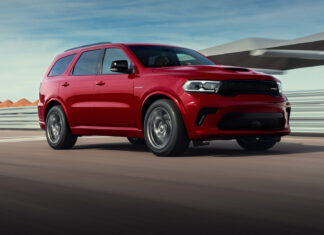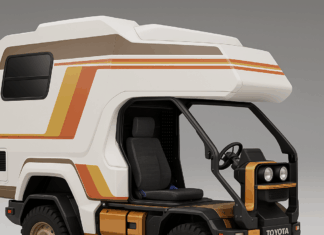If you are in a rollover crash in a small truck the Insurance Institute for Highway Safety says you are safest in a Nissan Frontier, and on the other end of the spectrum you are the least safe in a Chevrolet Colorado.
In the most recent rollover test the Insurance Institute for Highway Safety compared the roof strength of 5 small pick-ups sold in the United States.
Read a review of the new 2010 Frontier HERE.
According to the IIHS:
"The Frontier, also sold as the Suzuki Equator, is the only pickup in
the group to earn the highest rating of good. The Ford Ranger is rated
acceptable while the Dodge Dakota, Toyota Tacoma, and Colorado (also
sold as the GMC Canyon) earn the second lowest rating of marginal."
Today's press release is below:
ARLINGTON, VA — The Nissan Frontier has the strongest roof and the Chevrolet Colorado the weakest among 5 small pickup trucks,
all 2010 models, that recently were tested for rollover protection by
the Insurance Institute for Highway Safety. The Frontier, also sold as
the Suzuki Equator, is the only pickup in the group to earn the highest
rating of good. The Ford Ranger is rated acceptable while the Dodge
Dakota, Toyota Tacoma, and Colorado (also sold as the GMC Canyon) earn
the second lowest rating of marginal.
The
rating system is based on Institute research showing that occupants in
rollover crashes benefit from stronger roofs. Vehicles rated good must
have roofs that are more than twice as strong as the minimum required
under the current federal safety standard. The ratings, products of the
Institute's new roof strength testing program, add to consumer
information tests that rate vehicles' front, side, and rear
crashworthiness. The rollover test is designed to help consumers pick
vehicles that will protect them the best in one of the most serious
kinds of crashes.
"As a group, small pickups aren't
performing as well as small cars or small SUVs in all of the
Institute's safety tests. None of the ones we tested is a top-notch
performer across the board. In fact, no small pickup earns our Top Safety Pick
award," says Institute senior vice president David Zuby. The Frontier
came close to winning the 2010 award, but it's rated acceptable instead
of good for protection against neck injury in rear crashes. To earn Top Safety Pick,
a vehicle has to earn good ratings for protection in front, side, rear,
and rollover crashes. It also has to have electronic stability control.
Nearly
10,000 people a year are killed in rollovers. When vehicles roll, their
roofs hit the ground, deform, and crush. Stronger roofs crush less,
reducing the risk of injury from contact with the roof itself. Stronger
roofs also can prevent people, especially those who aren't using safety
belts, from being ejected through windows, windshields, or doors that
have broken or opened because the roof deformed. Roofs that don't
collapse help keep people inside vehicles when they roll.
Rollovers
are much more common for SUVs and pickup trucks than for cars. In 2008
almost half (47 percent) of all pickup occupants killed in crashes were
in trucks that rolled over. This compares with 58 percent of deaths in
SUVs and 25 percent in cars.
The best occupant protection
is to keep vehicles from rolling in the first place. Electronic
stability control is significantly reducing rollovers, especially fatal
single-vehicle ones. When vehicles roll, side curtain airbags help
protect people. Safety belt use is essential.
In the Institute's roof strength test, a metal plate is pushed
against 1 corner of a roof at a constant speed. To earn a good rating,
a roof must withstand a force of 4 times the vehicle's weight before
reaching 5 inches of crush. For an acceptable rating, the minimum
strength-to-weight ratio required is 3.25. A marginal rating value is
2.5, and anything lower than that is poor. The Frontier withstood a
force of just over 4 times its weight. This compares with 2.9 times
weight for the Colorado. A strength-to-weight ratio of 4 reflects an
estimated 50 percent reduction in serious or fatal injury risk in
single-vehicle rollover crashes, compared with the current federal
standard of 1.5.
In April 2009, the National Highway
Traffic Safety Administration ended numerous delays by unveiling a new
rule that raises the federal roof strength requirement, currently a
strength-to-weight ratio of 1.5, to 3 for vehicles with weight ratings
up to 6,000 pounds. Roofs on vehicles with weight ratings 6,000 to
10,000 pounds will be required to withstand a force equal to 1.5 times
their unloaded weight, whereas these vehicles' roofs are not regulated
under the old standard. Another requirement is that roofs maintain
sufficient headroom during testing. For the first time, the government
will require the same performance on both sides of a roof when tested
sequentially. Phase-in begins in September 2012, and all vehicles must
comply by September 2016.
Follow on twitter @TFLcar or watch latest car review videos on YouTube.

























